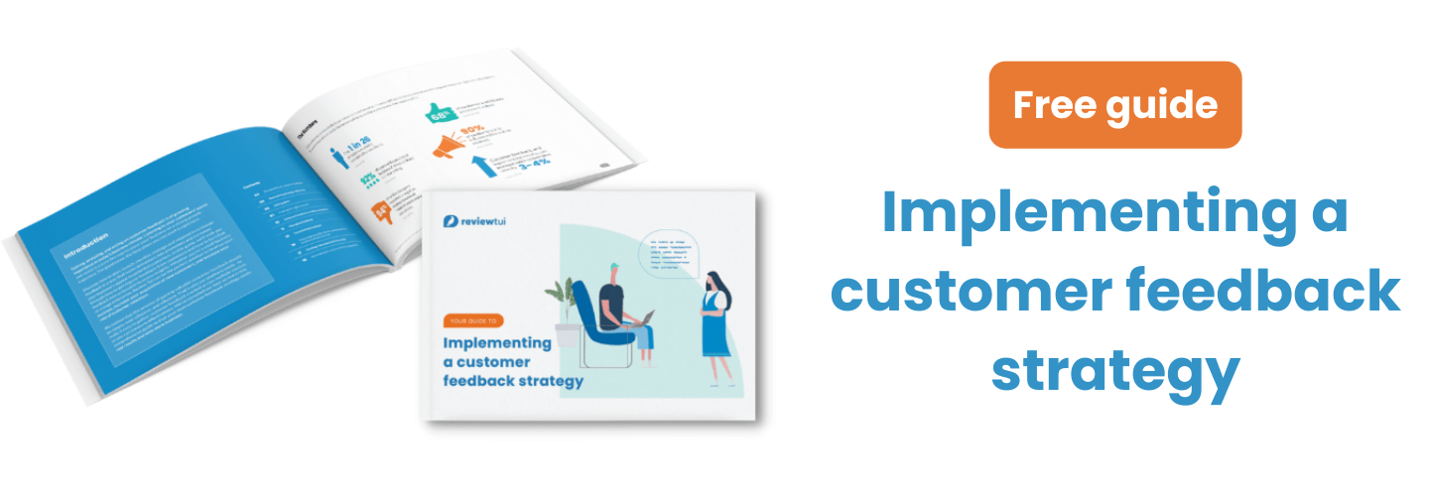Do people actually fill out online surveys?
When it comes to implementing a customer feedback strategy, brands want to know how many responses they are going to get – we understand! You don’t want to waste time and resources on a survey only to find your customers aren’t willing to respond.
But don’t worry, this article explores all the reasons why online surveys are the most effective customer feedback method and we even share a few real-world statistics to prove it.
Benefits of online surveys
As with any new business strategy, you need to know the benefits a particular tool will provide. In terms of online surveys, there’s quite a long list:
Convenient
Unlike the outdated paper surveys that were sent in the post, online surveys are by far the most convenient way to get customer feedback. Your customers can simply click a link, select their answers, type in some text boxes, and click submit – all in a matter of minutes. On your end, your Customer Feedback Management platform (CFM) will do all the sorting and analytics for you.
Fast
Because of their accessibility and automation, online surveys are remarkably quick. Without the need for snail mail, back-and-forth emails, or manual data entry, online surveys can be processed in much less time. Remember, customers are busy too so the less time they have to spend the more likely they are to respond at all.
Relevant
One key advantage of online surveys is that they can be updated and sent at the perfect moment. Paper-based forms are generic and the questions can often be irrelevant by the time they arrive in the customer's letterbox. Online surveys on the other hand can be sent at certain touchpoints in the buyer's journey such as after a purchase or customer service interaction. This way the customer’s experience is fresh in mind and their feedback is far more valuable.
Affordable
With no need to print thousands of forms or stock up on envelopes, online surveys are much more affordable. To be cost-effective, choose a CFM tool that takes care of the entire process – from survey building and distribution to organising and analysing the responses.
Automated
Unlike other feedback methods, online forms can be pre-programmed to send at the right time. This way, your team doesn’t have to manually send every survey because your CFM will send it automatically. This means your team can focus more on applying the findings to make meaningful changes.
Customisable
By using an online tool, you can tailor your surveys to suit your needs. That could mean adding your branding, the customer’s name, or even the communication channel you choose to share it on. These details make a great deal of difference because recipients feel less like a number and more like valued customers.
Conversion rates for online surveys
To determine how effective online surveys are, we need to calculate the response rates. This way, we can assess how many customers are willing to take the time and effort to share their insights with the brand.
To calculate response rates, you must calculate the percentage of people who opened and completed the survey from those who received it. If you sent the link to 100 people and 60 click on it, your response rate is 60%. If 30 of those people completed the survey, your completion rate will be 50%. Note that completion rates are relative to those who opened the survey, not the total number of customers.
While we know online surveys are the way forward, we don’t expect you to take the plunge without seeing some proof. To see it for yourself, check out these conversion rates from some of our clients in 2022, known here as Company A and Company B:
Email open rates
When an e-commerce company sends an order confirmation by email, it’s a good idea to incorporate an online feedback link. These emails have the highest open rates and therefore the link is far more likely to be clicked on. In the case of our two example businesses, post-transaction emails had an open rate of 45.9% and 42.4% respectively. That’s nearly half of their buyers!
Click-through rates for an email link
Once the customer has opened the email, the feedback link should be clearly shown as a call to action. This will guide customers to click on it and be taken to the external survey page. The click-through rates of these links were an impressive 24.6% for Company A and 37.1% for Company B.
Completion rates for online surveys
You also need to track how many people complete the survey after opening it. For Company A, 56.81% of the individuals that clicked to take the survey, followed through. For Company B the completion rate was 62.8%. This shows that customers who have something to say will generally be willing to share it as long as you give them a suitable opportunity.
Conversion rates to public reviews
Review Tui users can invite the survey respondent to leave a Google Review after the internal survey. This is a great way to encourage your high-scoring customers to leave a rave review and therefore raise your star ratings. Company A had 12% of customers leave a review and for Company B it was 9.2%.
As you can see, online surveys are by far the most convenient, efficient, and effective way to gather feedback from your customers. No matter what your reason is for requesting feedback, start by building a customised online survey. All you have to do is determine the questions to ask, the communication channels to use, and the means of sorting the response data.
At Review Tui, our new software makes this easy with:
- Quantifiable metrics, including CSAT and CES.
- Integrated analytics.
- Real-time reporting.
- HubSpot compatibility.
- An intuitive form builder and templates.
- Campaign links for any mode of communication.
With all of this accessible from a convenient dashboard and regular industry updates, you will always be up to date with what your customers are thinking. Sign up now for the software launch and you’ll be the first to hear all the upcoming announcements.



